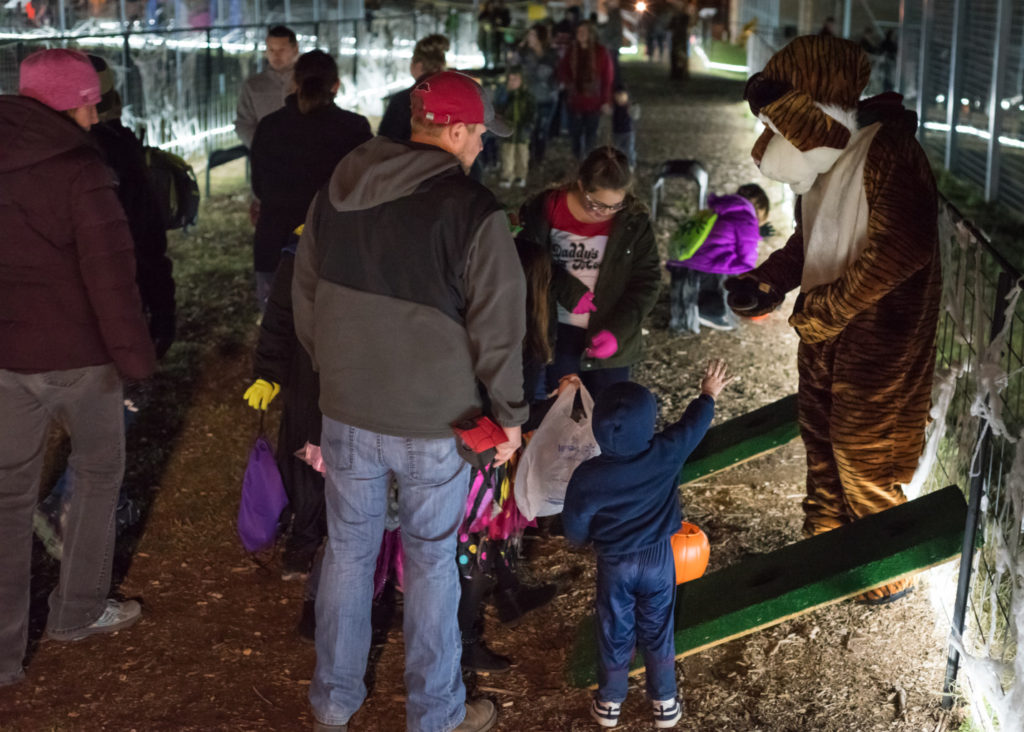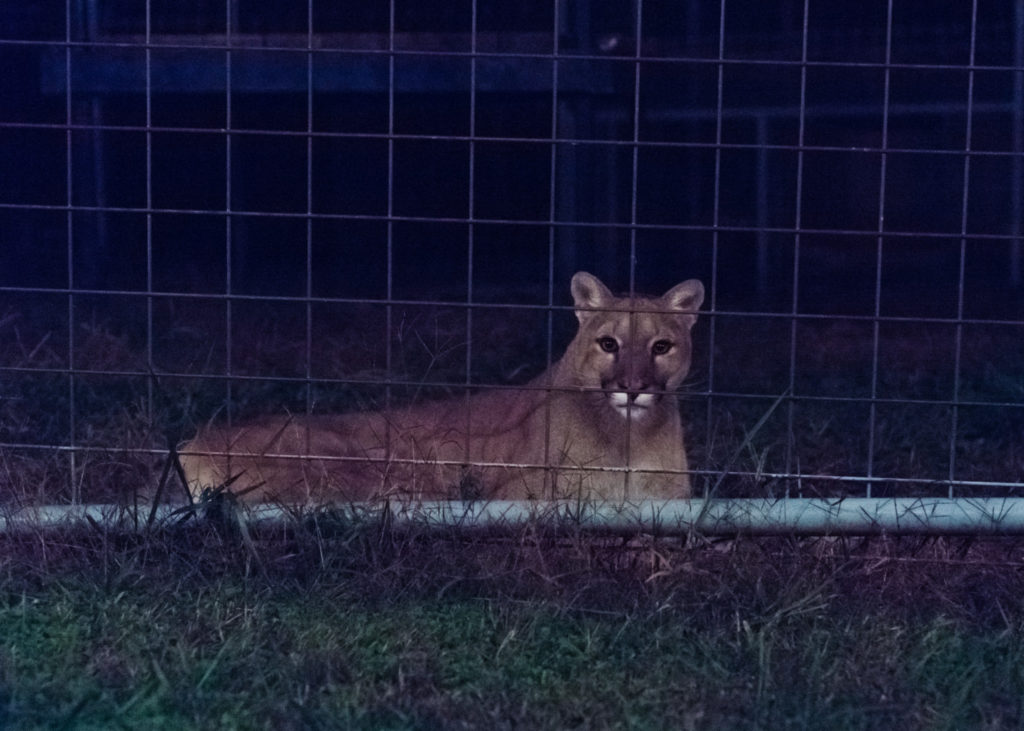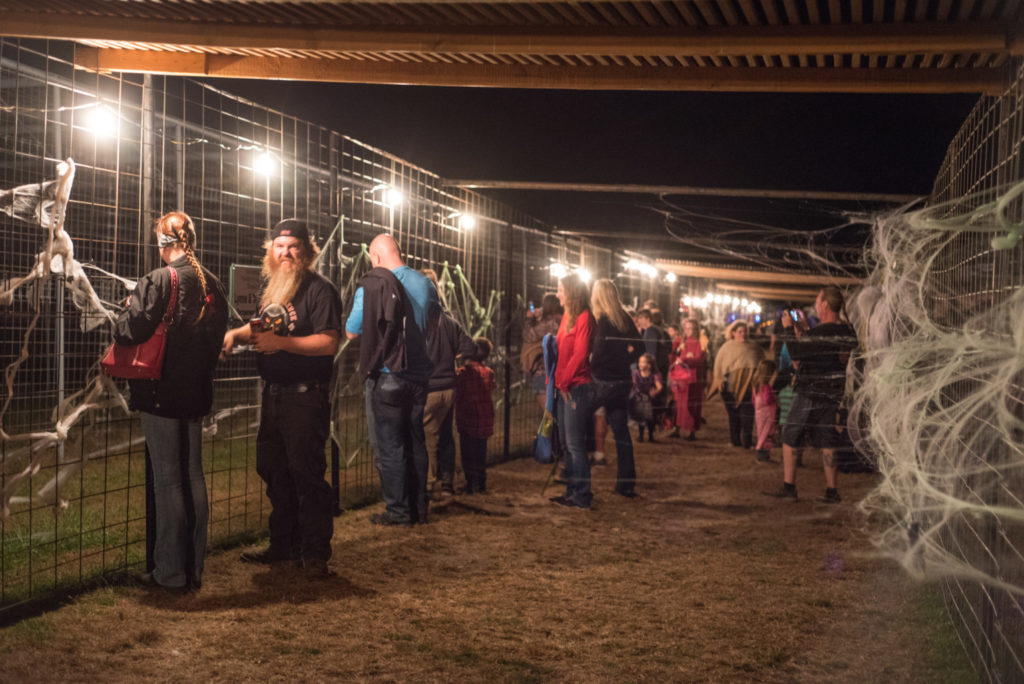You’re Invited For Our Annual Howl-O-Ween Event!
October 15, 2019
 Our annual Howl-O-Ween Spooktacular has been a hit the past 24 years, and we’re excited to bring our family-friendly celebration back Friday, October 25, from 7 PM – 9 PM. You read that right, we are moving our Howl-O-Ween Spooktacular event to Friday this year! We keep things age-friendly meaning the spookiest section of the Refuge is clearly marked and curtained off for the little ones who might get too frightened.
Our annual Howl-O-Ween Spooktacular has been a hit the past 24 years, and we’re excited to bring our family-friendly celebration back Friday, October 25, from 7 PM – 9 PM. You read that right, we are moving our Howl-O-Ween Spooktacular event to Friday this year! We keep things age-friendly meaning the spookiest section of the Refuge is clearly marked and curtained off for the little ones who might get too frightened.
Put on your favorite costume and see if you have the ghostly grit to win one of our costume contests or compete against other sneaky spooks in a variety of games! Bob along like candied apples in our bounce house and curb your zombie-like hunger with goodies from our concession stand (brains not served). You can also enjoy mystical entertainment by magician Carlos David Magic! Not to mention, the most exciting part:
This is your one chance of the year to see our big cats in a whole new light: after dark!

We will be giving guided hayride tours to all attendees. Most of our animal residents are highly active at night. The Refuge decorations and bustling of costume-clad princesses and werewolves provide engaging enrichment that gets them excited!
See if you can spot the stripes of our tiger residents in the moonlight! Tigers are literally built for hunting after the sun goes down. When the moon hits their stripes, their bodies appear “broken up,” making it difficult for their prey to differentiate between predator and shadows! Their eyes contain more rods than cones; rods are used to identify shapes while cones process color. A higher rod-count allows them to detect movement in their nighttime environment when seeing in clear color would not be useful.
 Lions sometimes hunt at night but are much more opportunistic with their schedules. Typically, hunting after dusk is beneficial to this breed of felines because their eyesight and stealth is more efficient than their prey’s. It is also much cooler, which benefits lions in two ways. First, they aren’t having to exert themselves as they would under the baking Savannah sun. Second, prey like antelope stores body heat then releases it at night, which means their muscles are weaker at that time, making them an easy meal for a hungry lion!
Lions sometimes hunt at night but are much more opportunistic with their schedules. Typically, hunting after dusk is beneficial to this breed of felines because their eyesight and stealth is more efficient than their prey’s. It is also much cooler, which benefits lions in two ways. First, they aren’t having to exert themselves as they would under the baking Savannah sun. Second, prey like antelope stores body heat then releases it at night, which means their muscles are weaker at that time, making them an easy meal for a hungry lion!
You’ve likely observed our leopard residents idly perching high upon the natural features placed throughout their habitat during your daytime visit. This is how they spend their days in the wild but at night is when they come out to find food! Like lions, they are often opportunistic with their hunts, but because they solitarily search for prey in the hot sun without a powerful band of teammates to help out, nighttime is their best time. They prefer ambushing predators from the shadows of trees and are hesitant to waste energy on a long chase if their sneak attack fails.
Our African Serval residents are actually considered “crepuscular,” which means they are more active during twilight, but will occasionally emerge at night. Our bear residents may be snoozing in their dens during the Spooktacular, as this species commonly checks their bear-necessities off their to-do lists from dawn until dusk, though in certain areas with high human populations, some have adapted a nocturnal lifestyle to avoid human contact. In the wild, cougars take a similar approach by going out during dawn, dusk, and at night to stay away from people. Bobcats are naturally nocturnal. This habit allows them to remain elusive, as well.
We hope you can join us Friday, October 25, and experience Turpentine Creek Wildlife Refuge like you never have before!
